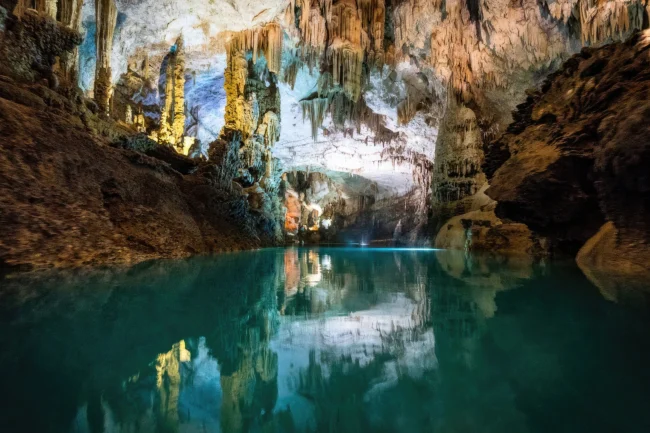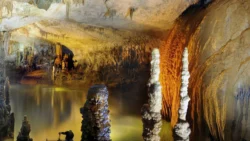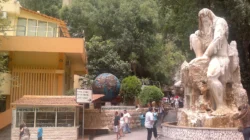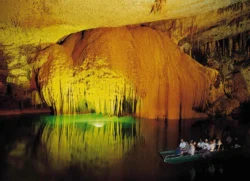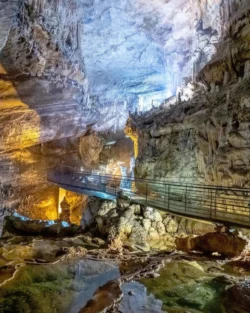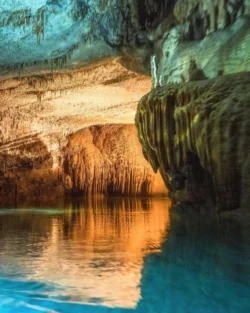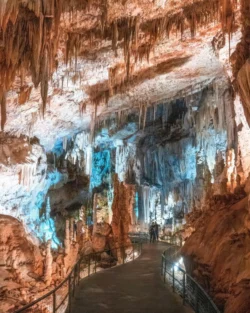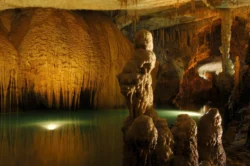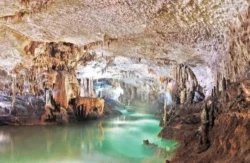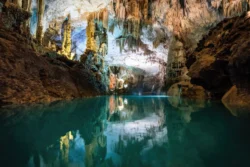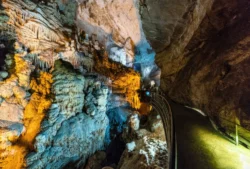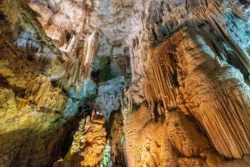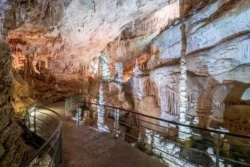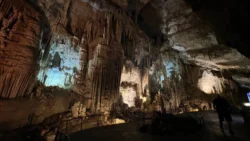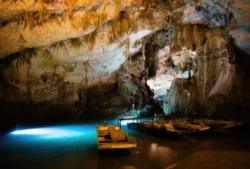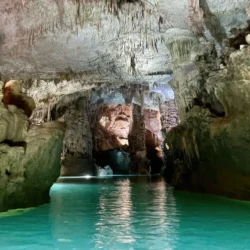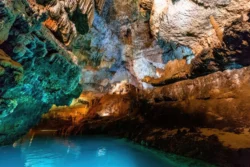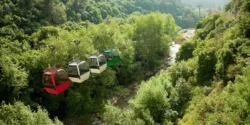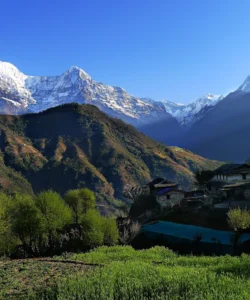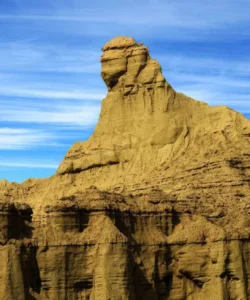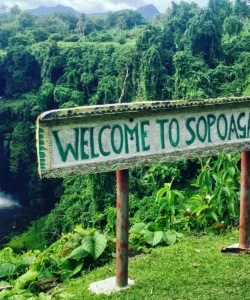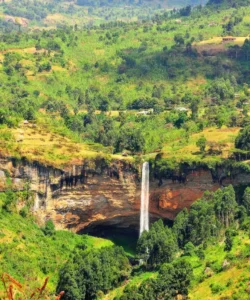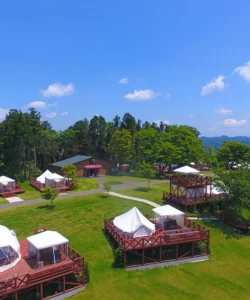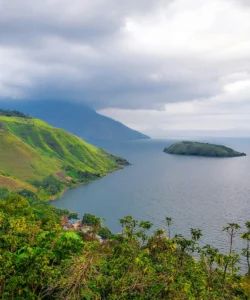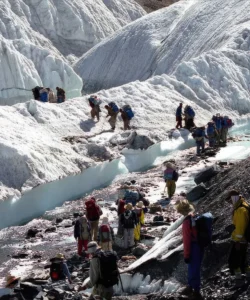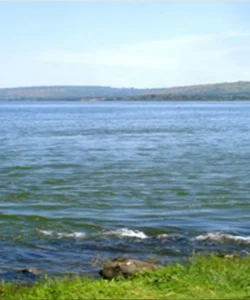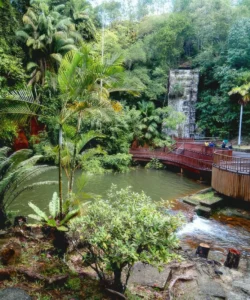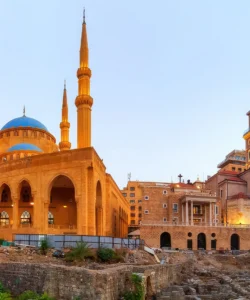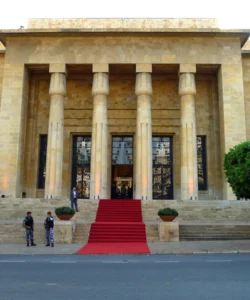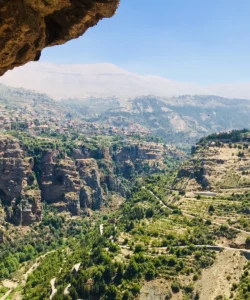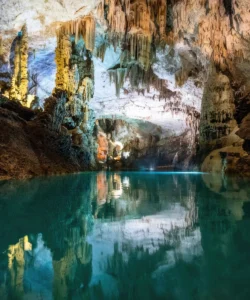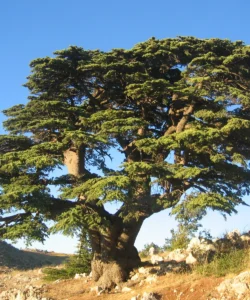The Jeita Grotto is a magnificent natural wonder in Lebanon, a finalist for the New7Wonders of Nature. It is a complex of two interconnected limestone caves that have been sculpted by water over millions of years, offering a breathtaking subterranean world of stalactites, stalagmites, and a crystal-clear underground river.
Listen to an introduction to Jeita Grotto
Name and Address
Name: Jeita Grotto (Arabic: مغارة جعيتا), a name derived from the Aramaic word for “roaring water.”
Address: The grotto is located in the Nahr al-Kalb valley in Lebanon, approximately 18 kilometers (11 miles) north of the capital city of Beirut.
How to Get There
The Jeita Grotto is a popular destination and is easily accessible from Beirut.
- By Car or Taxi: This is the most common way to get to the grotto. The drive from Beirut takes about 20-30 minutes, depending on traffic, via the coastal highway heading north towards Jounieh. The site is well-signposted from the main road.
- By Tour: Many travel agencies in Beirut offer day tours that include transportation and often combine a visit to the grotto with other nearby attractions like Harissa or Byblos.
Landscape and Architecture
The grotto’s “architecture” is a natural masterpiece of geological formations, with two distinct levels offering different experiences.
- Two Interconnected Caves: The grotto consists of two main parts: the Upper Grotto and the Lower Grotto. Visitors can access the upper grotto by a cable car ride, offering stunning panoramic views of the surrounding valley.
- Upper Grotto: This “dry” cave is explored on foot via a specially designed concrete walkway. It features a stunning display of enormous stalactites, with one measuring 8.2 meters, considered the longest in the world. The formations, sculpted by dripping water, create an otherworldly landscape.
- Lower Grotto: This “wet” cave contains a subterranean river and a serene lake. Visitors explore this section by taking a boat ride that glides over the clear waters, with the gentle sound of water echoing in the silence.
- Natural Light and Acoustics: The caves’ unique formations and a carefully designed lighting system highlight the natural beauty. The acoustics of the upper grotto are so exceptional that it has been used as a concert hall.
What Makes It Famous
The Jeita Grotto is famous for its natural beauty, its significant size, and its role as a national symbol.
- New7Wonders Finalist: It was a finalist in the global New7Wonders of Nature competition, solidifying its reputation as a world-class natural wonder.
- World’s Longest Stalactite: The upper grotto is home to the world’s longest known stalactite, a record that highlights its unique geological features.
- Symbol of Lebanon: As one of the most popular tourist attractions, it is a source of national pride and a testament to Lebanon’s natural beauty and commitment to conservation.
- Water Source: The underground river that flows through the grotto is a crucial source of fresh water for Beirut and the surrounding area.
Differences from Some Other Wonders (e.g., Postojna Cave)
While Jeita Grotto shares some similarities with other major cave systems like Postojna Cave in Slovenia, there are distinct differences.
- Riverine Experience: The lower grotto of Jeita is explored exclusively by boat on a calm subterranean river, offering a unique, serene experience. Postojna Cave, while having a river, is most famous for its underground train ride.
- Geological Record: Jeita Grotto is renowned for having the world’s longest stalactite.
- Acoustics and Function: Jeita Grotto’s upper cave is famous for its natural acoustics, which has allowed it to host concerts and artistic events. Postojna Cave is also known for its acoustics in its “Concert Hall” chamber.
Jeita Grotto Photos:
